Preterm labor is regular uterine contractions after 20 weeks and before 37 weeks of pregnancy that cause cervical change or regular contractions with an initial presentation with cervical dilation of 2 cm or more. Preterm birth is birth after 20 weeks gestation and before 37 completed weeks gestation. Preterm birth affects over 15 million babies and their mothers and families worldwide. In 2019, in the United States, the preterm birth rate rose for the fifth year in a row to 10.23% from 10.02% in 2018, and the highest level was reported in more than a decade. Preterm babies are at risk for a multitude of complications that account for 36.3% of reported infant deaths (Griggs et al., 2020).
Nursing Care Plans and Management
One goal of Healthy People 2030 is that 90% of all women will receive prenatal care starting in the first trimester. Early prenatal care allows clients to be educated concerning signs of preterm labor so that interventions can occur early. Management involves suppression of preterm labor when tests show immature fetal pulmonary development, cervical dilation is less than 2 cm, and the absence of factors that contraindicate the continuation of pregnancy. The nurse should monitor closely for signs of fetal or maternal distress, and provide comprehensive supportive care for clients in preterm labor.
Nursing Problem Priorities
The following are the nursing priorities for patients in preterm labor:
- Assess fetal well-being
- Monitor maternal vital signs
- Evaluate cervical dilation and effacement
- Provide emotional support to the mother
- Prepare for potential emergency delivery
- Monitor and manage uterine contractions
- Initiate or continue IV fluids as needed
Nursing Assessment
Assess for the following subjective and objective data:
- Vaginal bleeding or spotting
- Regular or frequent contractions (more than four contractions in one hour)
- Menstrual-like cramps or lower abdominal pain
- Pressure or a feeling of heaviness in the pelvis
- Backache, especially in the lower back
- Change in vaginal discharge (increase in amount or change in consistency)
- Pelvic pressure or the sensation that the baby is pushing down
- Abdominal tightening or a feeling of the uterus hardening and then relaxing
- Intermittent or continuous dull lower back pain
- Increase in pelvic pressure or a feeling of the baby “dropping”
- Fluid leakage or gush of fluid from the vagina (rupture of membranes)
- Increase in pelvic pressure or a feeling that the baby is pushing down
- Flu-like symptoms, such as nausea, vomiting, diarrhea, or fever
- Unusual or persistent abdominal pain or cramping
- Change in fetal movement patterns (increase or decrease in fetal activity
Nursing Diagnosis
Following a thorough assessment, a nursing diagnosis is formulated to specifically address the challenges associated with preterm labor based on the nurse’s clinical judgment and understanding of the patient’s unique health condition. While nursing diagnoses serve as a framework for organizing care, their usefulness may vary in different clinical situations. In real-life clinical settings, it is important to note that the use of specific nursing diagnostic labels may not be as prominent or commonly utilized as other components of the care plan. It is ultimately the nurse’s clinical expertise and judgment that shape the care plan to meet the unique needs of each patient, prioritizing their health concerns and priorities.
Nursing Goals
Goals and expected outcomes may include:
- The client will verbalize understanding of the individual situation and possible outcomes.
- The client will report anxiety is reduced and/or manageable.
- The client will appear relaxed; with maternal vital signs within normal limits.
- The client will identify and/or engage in activities appropriate to the situation.
- The client will demonstrate reduction and/or cessation of uterine contractions.
- The client will prevent complications that arise from complete bed rest.
- The client will display no evidence of untoward effects of tocolytic therapy.
- The client will prevent or minimize maternal injury.
- The client will demonstrate cessation of uterine contractions, dependent on fetal well-being.
- The client will maintain pregnancy at least to the point of fetal maturity.
- The client will deliver a preterm but complication-free neonate.
- The client will report discomfort is minimized or controlled.
- The client will use relaxation techniques, effectively.
- The client will appear relaxed and will rest appropriately.
- The client will express feelings and worries to healthcare personnel.
- The client will state the absence of responsibility for preterm labor.
- The client will verbalize awareness of the implications and possible outcomes of preterm labor.
- The client will identify signs and symptoms requiring evaluation and intervention.
- The client will demonstrate an understanding of home therapy and/or self-care needs.
Nursing Interventions and Actions
Therapeutic interventions and nursing actions for patients in preterm labor may include:
1. Reducing Anxiety
Anxiety has both short-term and long-term effects on maternal, pregnancy and fetal outcomes. With increased anxiety, the cortisol hormone appears to cross the placenta and affect the fetus, disrupting ongoing processes, affecting the limbic and prefrontal cortex, and releasing chemicals such as acetylcholine and adrenaline in the mother’s body. These chemicals pass through the placenta into the fetus and have detrimental effects on proper fetal growth. Anxiety can also lead to inappropriate maternal responses to the fetus during pregnancy and decrease the ability to play a motherly role. Accordingly, it is essential to find some efficient therapeutic plans to reduce maternal anxiety during pregnancy (Bazrafshan et al., 2020).
Assess support systems available to the client or couple, whether the client remains hospitalized or is to return home to await delivery.
The assistance and caring of significant others, including caregivers, are extremely important during this time of uncertainty and stress. If the client is to return home, additional support will be required to meet self-care needs and homemaker activities as well as child care, as appropriate. Fostering an environment of intentional support and empathetic dialogue can build mutual trust, and assist the nurse in understanding the client’s perceptions of their experiences of preterm labor (Griggs et al., 2020).
Monitor maternal signs of preterm labor.
The nurse should be aware of the symptoms of preterm labor because they may occur in any pregnant woman, with or without risk factors. Common symptoms of early preterm labor are persistent, dull, and low backache; vaginal spotting; a feeling of pelvic pressure or abdominal tightening; menstrual-like cramping; increased vaginal discharge; uterine contractions; and intestinal cramping.
Continuously monitor maternal and fetal vitals.
Monitor the client’s vital signs and neurologic status closely. Respirations should be at least 12 breaths/min. FHR should be at 120-160 beats/min. Decreasing FHR can indicate fetal distress.
Explain the procedures, nursing interventions, and treatment regimen.
Information and knowledge of the reasons for these activities can decrease fear of the unknown. Clients desire honest and complete information, an opportunity to answer questions, and an explanation of medical terms, procedures, and expectations of care conferred in the language they understand and at the appropriate literacy level (Griggs et al., 2020).
Answer questions honestly, especially information regarding contraction patterns and fetal status.
The provision of clear information can help the client or couple understand what is happening and may reduce anxiety. The healthcare team should avoid using terms with negative connotations such as fetus, nonviable, incompatible with life, spontaneous abortion, and miscarriage as these terms might trivialize or dehumanize the client’s experiences (Griggs et al., 2020).
Encourage the use of relaxation techniques.
Application of relaxation exercises among 60 hospitalized primiparous pregnant clients at risk of preterm labor could significantly lessen the pregnancy anxiety level. The relaxation exercises were trained through the educational booklet and CD, and face-to-face and question-and-answer communications (Bazrafshan et al., 2020).
Encourage verbalization of fears or concerns.
The nurse should assess the client’s views of their pregnancy at the time of preterm labor. Incorporating this type of assessment will help provide individualized empathetic care (Griggs et al., 2020). Saisto et al., (2006) found that support interventions for pregnant women, which included discussions of concerns and feelings about birth, taught positive birth imagery (Kao et al., 2017).
Encourage the client to engage in complementary and alternative medicine (CAM).
Mind-body interventions, which constitute a major portion of the overall use of CAM, can provide support to alleviate or reduce feelings of stress. These include autogenic training, hypnotherapy, imagery, prayer, auto-suggestion, tai-chi, and yoga. These complementary therapies can have physiological as well as psychological benefits, which may consequently reduce the physio-pathological impact of stress (Kao et al., 2017).
Provide relaxation-focused nursing care to the client.
Relaxation-focused nursing care (RFNC) was created using Hypnobirthing and the Transactional Model. Hypnobirthing philosophy aims to reduce stress, fear, and tension in the pregnant woman by creating positive thoughts and emotions using the laws of mind. The Transactional Model defines stress as a special relationship between a person and the environment. It identifies the stressors of the person and indicates how they should be handled. RFNC is formed by using these two models and comprises positive language, a positive environment, and reducing stressors. RFNC may reduce the client’s state of anxiety, lower cortisol levels, and thus prevent preterm labor by lowering the severity of uterine contractions (Özberk et al., 2020).
Arrange psychotherapy sessions for the client as indicated.
The results of a study indicated that adding six sessions of individual face-to-face psychotherapy, one hour per day for six consecutive days, to inpatient medical care of clients successfully treated for preterm labor, reduced anxiety, and pregnancy stress, while enhancing their perceived control. Psychotherapy involves supportive elements focusing on responsiveness to needs for helping others through the insight obtained via empathic immersion in the therapy. This approach focuses on the client’s emotions (Mirtabar et al., 2020).
Assess individual strengths and identify previous positive coping behaviors.
Ascertaining the client’s coping behaviors and strengths helps to build on the qualities already available for the client to use in coping with the current situation.
Assess for aspects of behavioral distress in the client.
Maternal mental health problems can be measured using the standardized psychometric methods Impact of Event Scale (IES), General Health Questionnaire (GHQ), and State/Trait Anxiety Inventory. The predictors for maternal mental health gleaned through these assessment tools are related to pregnancy, preterm delivery, the infant’s gestational age, maternal trait anxiety, and parity (Misund et al., 2014).
Assess for the presence of a support person/s.
The client needs a strong support person with her during labor because if she has not yet taken preparation for labor class, she may be more concerned than the average woman.
Encourage the client to verbalize feelings and concerns.
The client in preterm labor is undergoing an extreme crisis situation. She cannot help asking herself, “What did I do to cause this?” Time spent taking the initial history or timing contractions presents an opportunity to not only bring that concern out in the open but any others the client may have as well.
Provide assurance to the client and partner during labor until the postpartum period.
Offer the client and her partner frequent reassurance during labor that she is breathing well with contractions or just is “doing well”. During the postpartum period, she may need continued reassurance as she is being asked to care for a very small and vulnerable appearing infant. Helping rebuild self-esteem this way not only prepares her better for the stress of labor but also prepares her to be a parent to her preterm infant.
Provide accurate information, reinforcing information previously given.
Receiving accurate information regarding her situation enhances the client’s trust in the healthcare personnel and also provides an opportunity to question and assimilate information.
Arrange for an appointment with a psychiatric clinical nurse specialist or other preofessionals for counseling, as appropriate.
The client may need additional help to resolve her feelings about the loss of control of her pregnancy. Referring her to professionals may help her gradually come to terms with the situation and assist her in creating future plans for herself and her infant.
2. Managing Activity Restriction and Bed Rest
Bed rest was often prescribed for women at risk for preterm birth. However, the benefits of bed rest are not clear, and many adverse maternal effects can occur. Therefore total bed rest is prescribed less frequently than it was in the past. Activity restrictions are often more moderate, such as resting in a semi-Fowler’s position or partial bed rest.
Assess uterine contractions and fetal response per protocol.
Assessment of uterine activity occurs with fetal heart monitoring to evaluate the presence or absence of contractions, frequency, duration, and palpated strength to inform the plan of care for preterm labor. The nurse may also assess uterine activity by observing the client’s demeanor, listening to the client on frequency and discomfort experienced with contractions, and uterine palpation to evaluate contractions (Griggs et al., 2020).
Assess the client’s vital signs and history of events prior to preterm labor.
Assess the vital signs of the client and obtain the history of events leading to the beginning of labor. The assessment provides a baseline for future comparisons.
Assess for the availability of psychosocial support.
High-risk pregnancy and the subsequent need for complete bed rest are stressful conditions in the normal course of family life. Therefore, the pregnant client and her partner need psychosocial support from their friends and relatives. Women in the study stated that psychosocial support from their families and families-in-law made it easier for them to endure bed rest. In addition to the pregnant woman, the spouse experiences tension due to the conditions associated with bed rest. The family’s problems during a high-risk pregnancy and maternal bed rest put the partner in need of getting support from relatives and friends (Janighorban et al., 2018).
Provide comforts measures (e.g., back rubs, changes of position, decreased stimuli in the room)
Comfort measures and relaxation techniques decrease muscle tension and fatigue and help promote a sense of well-being. Instruction in applying relaxation techniques can improve the state of a person’s psycho-physiological well-being (Griggs et al., 2020).
Explain the reasons for requiring bed rest and activity restrictions.
The prescription of bed rest is based on the assumption that it is effective in preventing preterm birth and safe for both the mother and fetus. However, Hatch et al (1998) report that evidence indicates that vigorous maternal exercise does not increase the risk of preterm birth. Leisure-time exercise may, in fact, improve high-risk pregnancy outcomes and reduce the risk of preterm birth (Maloni, 2010).
Place the patient in a lateral recumbent position (i.e., side-lying position) and decrease activity.
These measures are intended to keep the fetus off the cervix and may enhance uterine perfusion, bedrest may decrease uterine irritability. Nursing care should include positioning the client on her side for better placental blood flow, assessing vital signs frequently, and notifying the healthcare provider if tachycardia occurs.
Cluster nursing care: group activities together as much as possible, such as medication administration, vital signs, and assessment.
Clustering nursing care promotes longer opportunities for clients to rest between interruptions. Holistic care provided by the nurse focuses on facilitating the client’s psychological well-being and helping them cope with the impact of physiological stress brought by complete bed rest (Kao et al., 2017).
Provide uninterrupted periods for rest and/or sleep.
This helps promote rest, prevent fatigue, and may enhance relaxation. Additional efforts to minimize the adverse effects of long-term bed rest and prolonged hospitalization include the provision of privacy in a family unit and more organized activities to relieve boredom by recreation activities such as scrapbooking, blanket making, and knitting supplies during hospitalization (Maloni, 2010).
Offer diversional activities (e.g., reading, watching TV)
The distractions incorporated into the support intervention allowed participants in a study to engage in activities involving the care of their unborn infant and focused attention on the positive aspects of their pregnancy, rather than the restrictions in activities resulting from antepartum bed rest. Preparing clothing for a newborn, recording fetal growth, and maintaining a diary about their feelings were distractions that assisted the participants in recognizing they had a responsibility to their unborn child and were capable of performing well in the role of motherhood (Maloni, 2010).
3. Preventing Injuries
Preterm birth is the leading cause of neonatal morbidity and mortality worldwide, with an estimated incidence of 11.54% in North America. Tocolytics have been used to delay preterm labor, allowing sufficient time to transfer clients to tertiary care facilities and to administer antenatal corticosteroids. Rare and severe side effects such as pulmonary edema, associated with the use of magnesium sulfate and calcium channel blockers, have emerged as the number of clients taking these medications increased (Xiao et al., 2014). In 2011, Cantwell reported that pulmonary edema is the fourth most common form of maternal morbidity, therefore it is important to pay attention to this condition due to tocolytic administration (Zeraati & Naghibi, 2019).
Preventing Maternal Injury
Monitor vital signs and investigate cardiac irregularities.
Beta-adrenergic drugs such as terbutaline have cardiac side effects such as increased pulse rate and blood pressure. If calcium channel blockers were given as tocolytics, the nurse should closely monitor the pulse rate and blood pressure because the drug causes maternal flushing and hypotension.
Auscultate lung sounds and investigates reports of dyspnea and/or chest tightness.
When magnesium sulfate (MgSO₄) is used, the nurse should monitor for respiratory rate and lung sounds, and signs of fluid overload. One study found that the combination of nifedipine and MgSO₄ increases the risk of pulmonary edema. Nifedipine enhances the neuromuscular-blocking effect of MgSO₄ which in turn can alter cardiac and pulmonary functions (Xiao et al., 2014).
Measure intake and output.
Magnesium levels must be monitored frequently by checking serum levels every 6 to 8 hours or clinically by checking the urine output (Hicks & Tyagi, 2022). This prevents fluid excess, especially when MgSO₄ is administered which is excreted through the kidneys, therefore urine output must be maintained.
Weight client daily.
Weighing the client upon admission and monitoring regularly detects potential alteration in urinary functioning and/or retention of fluid. Fluid redistribution may be caused by sympathetic activation in the stress status which could lead to weight changes in pulmonary edema (Zeraati & Naghibi, 2019).
Monitor for drowsiness, hot flashes, visual disturbances, respiratory depression, and depressed tendon reflexes.
This may indicate neuromuscular depression, indicating increasing serum levels of magnesium sulfate. Clients most commonly complain of minor facial flushing and warmth with the administration; however, symptoms typically resolve spontaneously. Patellar reflexes should be checked frequently to monitor magnesium levels (Hicks & Tyagi, 2022).
Monitor serum magnesium levels per protocol during the administration of magnesium sulfate.
The toxic effects of magnesium are inherently linked to the levels found in the serum. As magnesium levels rise, different symptoms start to manifest, and the fatality of those symptoms is proportional to the levels of magnesium found. Starting at 5 to 10 mEq/L, clients will begin to develop ECG changes. At 10 mEq/L, there will be a loss of deep tendon reflexes and muscle weakness. At 15 mEq/L, signs of abnormal conductivity surface as SA/AV node block (Ajib & Childress, 2021).
Monitor nifedipine levels. Note the development of tachycardia, hypotension, peripheral edema, or proteinuria.
The therapeutic dosage of nifedipine for preterm labor has not been established. Periodic monitoring may avert or prevent the development of adverse effects (e.g., heart failure). Nifedipine triggers hypotension and reflex sinus tachycardia. Depending on age, health, co-ingestion of other cardiovascular medications, and the magnitude of toxic ingestion, the presentation may vary from asymptomatic to sudden cardiovascular collapse and death (Reddy, 2022).
Assess uterine contractions and FHR electronically while IV tocolytics are administered, or at least twice a day when the oral route is used.
Tactile electronic monitoring of uterine contractions and FHS provides a continuous fetal/uterine assessment and basis for altering or maintaining the rate of drug administration. The client may feel reassured by having an external fetal monitor during labor because the monitor screen shows evidence that, although her infant is going to be small, heart tones seem to be of good quality and the infant is reacting well to labor.
Encourage fluid intake between 2,000 and 3,000 ml/day, unless contraindicated (e.g., during the administration of magnesium sulfate).
Following initial therapy and if contractions have ceased and there is evidence of fetal well-being, the client with arrested preterm labor can be safely cared for at home as long as they can dependably drink enough fluid to remain well hydrated. However, if the client is taking magnesium sulfate, increased fluid intake may not be appropriate as this may contribute to pulmonary edema (Hicks & Tyagi, 2022).
Place the client in a lateral recumbent position. Elevate head during infusion of IV drug.
The lateral recumbent position decreases uterine irritability, increases placental perfusion, and reduces supine hypotension. Lying down on the left side encourages the blood to return to the uterus.
Have antidotes (calcium gluconate for magnesium sulfate; propranolol for terbutaline sulfate) readily available:
See Pharmacological Management
Administer IV solution or fluid bolus as indicated.
Hydration may decrease uterine activity. Before beginning drug therapy, hydration promotes renal clearance and minimizes hypotension. Intravenous therapy to keep the client well hydrated should be started because although not well documented, hydration may help stop contractions. This is thought to be effective because if the client is dehydrated, the pituitary gland will be activated to secrete the antidiuretic hormone, which might cause the pituitary gland to release oxytocin as well, strengthening uterine contractions.
Administer IV solutions containing tocolytic agents (e.g., magnesium sulfate, terbutaline sulfate) by infusion pumps or micro drip equipment, or by subcutaneous route.
See Pharmacological Management
Obtain serum potassium level prior to initiation of IV terbutaline and periodically per protocol. Monitor serum glucose and potassium levels.
Terbutaline sulfate causes the movement of potassium ions into cells, decreasing plasma levels; elevated blood glucose and plasma insulin levels, and release of glycogen from muscle and liver may result in hyperglycemia. The drug should be discontinued two hours before delivery to avoid side effects in the newborn.
Administer nifedipine to be chewed and swallowed with food or drink. Nifedipine may occasionally be alternated with terbutaline sulfate.
Nifedipine, a calcium channel blocker, has been used experimentally when other drugs fail to suppress uterine activity. It is commonly used to stop labor contractions. Magnesium sulfate should not be used when nifedipine is used or when an intrauterine infection is suspected.
Apply anti embolic hose as indicated, and provide passive range of motion exercises to legs every 1-2 hours.
Deep vein thrombosis and other emboli are 5 times more likely to occur during pregnancy, especially if the client is prescribed complete bed rest (Maloni, 2010). This prevents the pooling of blood in the lower extremities, which can occur because of smooth muscle relaxation.
Insert indwelling catheter, as indicated.
Careful monitoring of urine output is warranted as magnesium sulfate is excreted through the kidneys (Griggs et al., 2020).
Preventing Fetal Injury
Assess for maternal conditions contraindicated to steroid therapy.
Severe, fulminant chorioamnionitis is a contraindication to steroid therapy; immediate delivery is indicated in these cases. In the case of preeclampsia between 24 and 34 weeks of gestation, antenatal steroids can be administered as long as delivery can be safely delayed for at least 12 to 24 hours (Surbek et al., 2012).
Assess FHR; note the presence of uterine activity or cervical changes.
Tocolytics can increase FHR. Overdose can affect the cardiorespiratory system. If the fetus is born during magnesium therapy, drowsiness may be present, and resuscitation may be required. Delivery may be extremely rapid with a small infant if persistent uterine contractions are unresponsive to tocolytics, or if cervical changes continue.
Assess the preterm infant immediately after birth.
The nursery staff should be notified if magnesium sulfate therapy was used within two hours before delivery. The FDA recommends limiting the use of magnesium sulfate to fewer than 5 to 7 days because the fetus can develop low blood calcium, bone problems, and respiratory depression with prolonged use. Administration of prostaglandin synthesis inhibitors can stimulate the ductus arteriosus to close prematurely, causing fetal death. Close fetal monitoring is essential.
Provide information about the actions and side effects of the drug therapy.
Information about the drugs’ side effects is important for the client or couple to know the purpose of the drugs being administered.
- Beta-agonist therapy: These drugs are administered subcutaneously to stop uterine contractions within minutes. Nasal stuffiness and hyperglycemia can occur, and the drug should be discontinued 2 hours before delivery to avoid side effects in the newborn.
- Steroid therapy: Steroids have significantly reduced the incidence of respiratory distress syndrome, intraventricular hemorrhage, necrotizing enterocolitis, and neonatal death by enhancing the formation of surfactant in fetal lungs (Griggs et al., 2020).
- Magnesium sulfate: Magnesium sulfate reduces cerebral palsy risk in premature infants and protects the fetal brain from injury through stabilization of neuronal axons, along with preventing intracranial bleeding.
Stress necessity of follow-up care for antenatal steroid therapy.
If the fetus is not delivered within seven days of administration of steroids, the dose should be repeated weekly. It was assumed in certain clinical situations, namely, in acute deterioration with renewed threatened preterm delivery, that repeating antenatal steroids once (“rescue course”) could be advantageous. Although there has been limited evidence to date to support this, a recently published, randomized study with nearly 500 clients showed that the second course of antenatal steroids administered up to 32 weeks of gestation with a minimal interval of two weeks from the first course- can improve neonatal outcomes without increasing short-term risks (Surbek et al., 2012).
Educate the client thoroughly upon discharge.
On discharge, the nurse should focus education on individualized client needs, home care, and provider follow-up instructions, and signs and symptoms that require seeking immediate medical attention such as ruptured membranes, bleeding. Increasing frequency and intensity of contractions as well as decreased fetal movement (Griggs et al., 2020).
Assist as needed with analysis of amniotic fluid from amniocentesis or vaginal pool specimen; test for ferning.
L/S ratio, presence of PG, and shake test results indicate fetal lung status. Ferning indicates rupture of membranes with an increased risk of infection. The presence of amniotic fluid pooling, ferning pattern, and positive Nitrazine reading are all highly indicative of rupture of membranes (Griggs et al., 2020).
Administer betamethasone (Celestone) deep IM.
See Pharmacological Management
Administer antibiotics, as indicated.
See Pharmacological Management
Initiate tocolytic therapy, as ordered.
The American College of Obstetricians and Gynecologists advocates for the use of a short course of tocolytic medications in cases of preterm labor less than 32 weeks of gestation. The goals are to inhibit contractions to have sufficient time for antenatal corticosteroid administration or for in utero transport to a hospital that can support a high-risk client (Griggs et al., 2020).
Assist in performing fetal fibronectin.
Fetal fibronectin is an extracellular matrix glycoprotein that is produced by fetal cells and can be detected in maternal vaginal secretions from early gestation to the early second trimester, gradually decreasing to undetectable in pregnancy at low risk for preterm birth. When a sample of fluid is collected between 22- and 34 weeks gestation, and it is found to be negative for fetal fibronectin, this is a high-reliability indicator that preterm birth will not occur within 14 days (Griggs et al., 2020).
4. Managing Pain
Preterm labor and birth can be either spontaneous or iatrogenic. Spontaneous preterm labor and preterm birth include preterm premature rupture of membranes, a natural onset of uterine contractions, and cervical dilation. The client is asked about pain, vaginal bleeding, amniotic fluid leakage, abdominal cramping or tightening, lower back pain or pelvic pressure, and specific activities that may have preceded symptoms (Griggs et al., 2020).
Assess the client’s level of pain.
Pain perception differs from one person to the next and is influenced by the individual’s physical, psychological, and cultural conditions. Chemical and hormonal reactions taking place before, during, and after labor might influence pain thresholds. Anxiety and fear increase catecholamine concentration in the plasma, which is associated with enervated uterine contractions (Junge et al., 2018).
Monitor maternal and fetal vital signs.
Assess the vital signs of the client and the fetus. An assessment provides a baseline for future comparisons. Attach a contraction and FHR monitors for continuous evaluation of contractions and fetal response. Uterine and fetal monitoring provides evidence of fetal well-being.
Assess and record the characteristics of uterine activities.
Assessment of uterine activity occurs with FHR monitoring to evaluate the presence or absence of contractions, frequency, duration, and palpated strength to inform the plan of care for preterm labor. The nurse may assess uterine activity by observing the client’s demeanor; listening to the client on the frequency and discomfort experienced with contractions, and uterine palpation to evaluate contractions (Griggs et al., 2020).
Position the client in a lateral recumbent position.
Position changes may promote comfort and increase venous return. A lateral recumbent position enhances placental circulation and helps the fetus adapt to the size and shape of the client’s pelvis.
Teach relaxation techniques (e.g., deep breathing exercises, visualization, guided imagery, soft music).
Nursing care is believed to have a positive effect on anxiety by addressing stressors, informing about the preterm labor process, and providing relief through relaxation exercises. Nurses are recommended to apply relaxation exercises after evaluating their stress and anxiety levels. Uterine contraction severity may decrease if the stress and anxiety level of the client can be decreased by using relaxation-focused nursing care, causing an increase in gestational weeks. Thus, both maternal and fetal health can benefit from this (Özberk et al., 2020).
Use nursing comfort measures such as changes of linen and position, back rubs, and therapeutic touch.
One of the most effective non-pharmacological methods to reduce pain is massage. The basis of this theory is the gate control theory proposed by Melzak and Wall. The gate control theory states that during labor, the impulse of pain labor travels from the uterus along the large nerve fibers toward the uterus to the gelatinous substance within the spinal column. The transmission cells project pain messages to the brain. The presence of stimulation (such as vibration, rubbing, or massage) results in stronger and faster opposite messages along small nerve fibers. This opposite message closes the gate on the substance of gelatinosa and blocks pain messages, so the brain does not record the pain message (Oktriani et al., 2018).
Encourage routine inspection of mucous membranes for ulceration or reaction to chewing of nifedipine, if used.
Nifedipine may be irritating to the oral cavity in which case it should be swallowed whole. Gingival overgrowth associated with nifedipine was first reported in 1984, with prevalence rates of 14.7-83%. Various possible associated pathogeneses include alteration in calcium metabolism, stimulation of interleukin-2 by activated T cells, and also the role of TGF-beta and heparan sulfate glycosaminoglycan (Sivaramakrishnan & Sridharan, 2016).
Assist and educate the client with breathing techniques.
Using consciously controlled breathing, or setting breathing patterns at specific rates, provides distraction as well as prevents the diaphragm from descending fully and putting pressure on the expanding uterus. To practice, after a cleansing breath, the client inhales comfortably but fully and then exhales, with her exhalation a little stronger than her inhalation to prevent hypoventilation.
Administer analgesics, as indicated.
See Pharmacological Management
Assist with the administration of an epidural block.
An epidural block is given by injecting anesthetic drugs so that they bathe the nerves as they emerge from the spinal cord. The spinal cord and nerves are not directly injected. An epidural block for labor is more accurately termed analgesia (reducing pain) than anesthesia (obliterating all sensation). An epidural block also decreases postpartum depression and reduces the partner’s feeling of helplessness, often increasing the partner’s participation.
5. Initiating Patient Education and Health Teachings
Women desire honest and complete information, an opportunity to answer questions, explanation of medical terms, procedures, and expectations of care including resuscitative initiatives conferred in a language they understand and at the appropriate literacy level.
Ascertain the client’s knowledge about preterm labor and possible outcomes.
Nurses, midwives, healthcare providers, and other members of the clinical team should avoid using terms with negative connotations such as fetus, nonviable, incompatible with life, spontaneous abortion, and miscarriage as these terms might trivialize or dehumanize the client’s experiences. More favorable language such as life-limiting condition, maternal and wellbeing, and referring to the baby’s name or what the parents prefer should be used (Griggs et al., 2020).
Assess client readiness to learn.
Factors such as anxiety or lack of awareness of the need for information can interfere with readiness to learn. Retention of information is enhanced when the client is motivated and ready to learn. The nurse should assess the client’s views of their pregnancy at the time of the preterm labor. For example, do they perceive their unborn child as a son or daughter with a name or are they viewing this as early pregnancy. Involving this type of assessment will help provide individualized empathetic care (Griggs et al., 2020).
Include significant others in the teaching-learning process.
Literature shows that partners can receive limited attention from midwives and that they are not always involved during labor and birth. Partners who are less involved can have a more negative birth experience. When the partner feels left out, this can be associated with panic and helplessness. Involving partners may result in a range of positive effects, such as being able to better manage their overwhelming feelings of helplessness or experiencing the first contact with their child more positively. Supportive partners during pregnancy can decrease the risk of preterm delivery by moderating the effects of maternal chronic stress (Eggermont et al., 2016).
Provide information about follow-up care when the client is discharged.
The client may need to return on a regular basis for monitoring and/or treatments. On discharge, the nurse should focus education on individualized client needs, home care, provider follow-up instructions, and signs and symptoms that require seeking immediate medical attention such as ruptured membranes, bleeding, increasing frequency and intensity of contractions as well as decreased fetal movements (Griggs et al., 2020).
Identify signs and/or symptoms that should be reported immediately to the healthcare provider (e.g, sustained uterine contractions, clear drainage from the vagina, bleeding).
Prompt evaluation and interventions may improve the outcome of the pregnancy and avert complications. Signs and symptoms of acute preterm labor include cramps that feel like menstrual cramps, feeling the baby balling up, regular and more frequent contractions (sometimes painless), increase in the amount of discharge, ruptured membranes or leaking fluid, constant low, dull backache, and pelvic or lower abdominal pressure (Griggs et al., 2020).
Review the signs and symptoms of early labor with the client.
Because preterm labor signs and symptoms can be subtle, it is essential all pregnant women are offered counseling, education, and information early in pregnancy about signs and symptoms of preterm labor and what to do if these occur. Pregnant women need to know about the importance of immediately seeking medical care at the hospital for evaluation of preterm labor signs and symptoms (Griggs et al., 2020).
Demonstrate how the client is to evaluate contraction activity after discharge (e.g., lying down, tilted to the side with a pillow to the back, placing fingertips on the fundus for approximately 1 hour to note hardening or tightening of the uterus).
Although uterine contractions commonly occur periodically, contractions occurring 10 mins or less apart for an hour can result in cervical dilation and labor without prompt intervention. Self-monitoring is usually adequate and has no cost; however, some healthcare providers may require electronic monitoring, which necessitates data being transmitted via telephone lines and interpreted by a nurse upon receipt. Self-monitored data on maternal and fetal well-being can be transferred electronically from the client to the hospital with a mobile device including a telemedicine platform as the primary source for communication and data transfer. A qualitative study showed that the pregnant women experienced less anxiety and more freedom and flexibility in the home monitoring setting than they thought they would have experienced under a conventional regime (Zizzo et al., 2021).
Arrange for the client to visit the neonatal intensive care unit (NICU).
Investigators from Canada, Europe, Australia, and New Zealand recently published results from their multicenter cluster-randomized controlled trial that assessed the effect of family integrated care in the NICU on infant and parent outcomes. The intervention included a parental presence at the infant’s bedside for at least 6 hours per day, attendance at educational sessions, and active participation in infant care. In this study of 26 sites, compared to infants who received standard of care, infants in the family integrated care (FICare) group had better weight gain during birth hospitalization and exclusive breastmilk feeding at discharge. Parents in the FICare group had lower mean stress scores and lower mean anxiety scores (Klawetter et al., 2019).
Discuss the need to change lifestyle habits by smoking cessation and by restricting sexual activity and nipple stimulation.
Smoking cessation- especially early in pregnancy- is associated with a reduced risk of preterm birth. Expectant mothers who smoke may face greater challenges in quitting compared with their counterparts who are not pregnant (Soneji & Beltran-Sanchez, 2019). Nicotine has an adverse effect on fetoplacental growth and on uterine circulation. Orgasm or release of oxytocin (from nipple stimulation) may stimulate uterine activity.
Encourage regular rest periods 2-3 times a day in a side-lying position.
If the client is up and about, resting in the bedroom may maximize rest. If bed rest is to be continued after discharge, suggest the client spend part of the day on the couch or recliner. It is possible that antepartum bed rest might decrease preterm birth but evidence has not yet been found to support that conclusion. Experts agree that bed rest should not be a standard component of treatment for the prevention of preterm birth and, furthermore, that the practice should be eliminated (Maloni, 2010).
Review daily routine, employment, and activity schedule to identify alternatives and ways to compensate for limitations.
Pacing activities, avoidance of heavy chores, lifting, and modification in work duties or cessation of employment may help prevent the recurrence of preterm labor. Of 300 women with a short cervix, women who exercised > 2 days per week (at least 20 min. duration), had lower rates of preterm birth compared to women who exercised less than this. The rate of preterm birth before 34 weeks was 9% in the ‘exercise’ group and 32% in the ‘no exercise’ group (Walsh, 2020).
Determine availability and level of commitment to supportive resources.
Division of home care responsibilities helps reduce the risk of caregiver burnout when one individual attempts to take on responsibilities of the client in addition to their own role. Getting support from husbands, midwives and physicians, employers, and colleagues is an effective factor in building the capacity to cope with the problems during pregnancy and to achieve physical and mental balance. Moreover, the results of a study performed by Bawadi et al. demonstrated that husbands, by partaking in responsibilities, sympathy, attention, and protecting their wives play a supportive role during pregnancy. Weak support from a husband was associated with the pregnant woman’s anxiety and concern (Janighorban et al., 2018).
Advise client to empty bladder every two hours while awake.
This prevents the pressure of a full bladder on the irritable uterus. Epidural or pudendal analgesia may interfere with sensations of fullness. The nurse should palpate the suprapubic area for a full bladder every 2 hours or more if a large IV solution was given.
Review daily fluid needs; avoid coffee.
Dehydration and caffeine both lead to increased uterine muscle irritability. The client may drink two or three glasses of fluid to increase hydration. Hydration may also help stop contractions. This is thought to be effective because if a woman is dehydrated, the pituitary gland will be activated to secrete the antidiuretic hormone, which might cause the pituitary gland to release oxytocin as well, strengthening uterine contractions.
Stress avoidance of OTC drugs while tocolytic agents are being administered unless approved by the physician.
Concurrent use of OTC drugs may cause deleterious effects, especially if OTC drug has similar side effects to tocolytic agents. Magnesium sulfate should not be used when nifedipine is used or when an intrauterine infection is suspected.
Provide information about taking oral tocolytics with food.
Food improves tolerance to drugs and reduces side effects. Interactions between food and drugs may inadvertently reduce or increase the drug effect. The majority of clinically relevant food-drug interactions are caused by food-induced changes in the bioavailability of the drug (Bushra et al., 2011).
Identify drug side effects requiring medical evaluation.
Magnesium sulfate causes a warm flush during the initiation of therapy. If the fetus is born during magnesium therapy, drowsiness may be present, and resuscitation may be required. Beta-adrenergic drugs cause cardiac side effects such as tachycardia, hypertension, nasal stuffiness, and hyperglycemia. Calcium channel blockers cause maternal flushing and hypotension due to their vasodilatory effects.
Establish a routine schedule for homecare nurse visitation. Provide regular telephone contact.
Weekly or biweekly visits provide an opportunity for regular physical assessment, review of uterine activity records, and additional information for education. Most previous studies of home management report that high-risk pregnancies are monitored by daily or weekly visits either by healthcare professionals visiting the pregnant women in their homes or by pregnant women attending check-ups at the outpatient clinic (Zizzo et al., 2021).
6. Administer Medications and Provide Pharmacologic Support
Medications commonly used in preterm labor aim to delay or stop contractions and promote fetal lung maturation. Tocolytic drugs, such as beta-adrenergic agonists (e.g., terbutaline), calcium channel blockers (e.g., nifedipine), or prostaglandin inhibitors (e.g., indomethacin), may be prescribed to inhibit uterine contractions. Other medications such as corticosteroids, (betamethasone or dexamethasone), are administered to enhance fetal lung development and reduce the risk of respiratory distress syndrome in preterm infants.
IV solution or fluid bolus as indicated.
Hydration may decrease uterine activity. Before beginning drug therapy, hydration promotes renal clearance and minimizes hypotension. Intravenous therapy to keep the client well hydrated should be started because although not well documented, hydration may help stop contractions. This is thought to be effective because if the client is dehydrated, the pituitary gland will be activated to secrete the antidiuretic hormone, which might cause the pituitary gland to release oxytocin as well, strengthening uterine contractions.
IV solutions containing tocolytic agents (e.g., magnesium sulfate, terbutaline sulfate) by infusion pumps or micro drip equipment, or by subcutaneous route.
- Magnesium sulfate
Magnesium sulfate is the drug of choice. It acts directly on myometrial tissue to promote relaxation; therefore, there are fewer side effects than other drug choices. It is not a very effective tocolytic, but it is used to protect the fetus from developing cerebral palsy. - Terbutaline sulfate
This medication relaxes uterine muscles as well as bronchioles and blood vessel walls. These drugs are administered subcutaneously to stop uterine contractions within minutes.
Nifedipine
Nifedipine, a calcium channel blocker, has been used experimentally when other drugs fail to suppress uterine activity. It is commonly used to stop labor contractions. Magnesium sulfate should not be used when nifedipine is used or when an intrauterine infection is suspected.
Betamethasone (Celestone)
Betamethasone is synthetic cortisol that can accelerate fetal lung maturity by stimulating surfactant production and thereby preventing or decreasing the severity of respiratory distress syndrome. The standard regimen of antenatal corticosteroids involves 12 mg of betamethasone administered intramuscularly, repeated once after 24 hours (Surbek et al., 2012).
Antibiotics
In the event of PROM and fetal lung immaturity, antibiotics may be used to prevent or reduce the risk of infection, while allowing an additional 24 hours to elapse after administration of Celestone. Antimicrobial therapy is often initiated in clients with preterm labor because studies have shown that subclinical chorioamnionitis is often present and for the prevention of group B streptococcus infection.
Analgesics
Mild analgesics decrease muscle tension and discomfort. Analgesics agents are administered with caution because an immature infant will have enough difficulty breathing at birth without the additional burden of being sedated from a drug such as meperidine. If the client wants pharmaceutical pain management for labor, an epidural is preferable.
Antidotes (calcium gluconate for magnesium sulfate; propranolol for terbutaline sulfate) readily available:
Administration of an antidote may be necessary to reverse or counteract the effects of tocolytic agents. In severe cases of magnesium toxicity, intravenous calcium gluconate can be used to displace and neutralize the effects of magnesium (Ajib & Childress, 2020)
Recommended Resources
Recommended books and resources for your NCLEX success:
Disclosure: Included below are affiliate links from Amazon at no additional cost from you. We may earn a small commission from your purchase. For more information, check out our privacy policy.
Saunders Comprehensive Review for the NCLEX-RN
Saunders Comprehensive Review for the NCLEX-RN Examination is often referred to as the best nursing exam review book ever. More than 5,700 practice questions are available in the text. Detailed test-taking strategies are provided for each question, with hints for analyzing and uncovering the correct answer option.

Strategies for Student Success on the Next Generation NCLEX® (NGN) Test Items
Next Generation NCLEX®-style practice questions of all types are illustrated through stand-alone case studies and unfolding case studies. NCSBN Clinical Judgment Measurement Model (NCJMM) is included throughout with case scenarios that integrate the six clinical judgment cognitive skills.

Saunders Q & A Review for the NCLEX-RN® Examination
This edition contains over 6,000 practice questions with each question containing a test-taking strategy and justifications for correct and incorrect answers to enhance review. Questions are organized according to the most recent NCLEX-RN test blueprint Client Needs and Integrated Processes. Questions are written at higher cognitive levels (applying, analyzing, synthesizing, evaluating, and creating) than those on the test itself.

NCLEX-RN Prep Plus by Kaplan
The NCLEX-RN Prep Plus from Kaplan employs expert critical thinking techniques and targeted sample questions. This edition identifies seven types of NGN questions and explains in detail how to approach and answer each type. In addition, it provides 10 critical thinking pathways for analyzing exam questions.

Illustrated Study Guide for the NCLEX-RN® Exam
The 10th edition of the Illustrated Study Guide for the NCLEX-RN Exam, 10th Edition. This study guide gives you a robust, visual, less-intimidating way to remember key facts. 2,500 review questions are now included on the Evolve companion website. 25 additional illustrations and mnemonics make the book more appealing than ever.

NCLEX RN Examination Prep Flashcards (2023 Edition)
NCLEX RN Exam Review FlashCards Study Guide with Practice Test Questions [Full-Color Cards] from Test Prep Books. These flashcards are ready for use, allowing you to begin studying immediately. Each flash card is color-coded for easy subject identification.

See Also
Other care plans related to the care of the pregnant mother and her baby:
- Abortion (Termination of Pregnancy) | 8 Care Plans
- Cervical Insufficiency (Premature Dilation of the Cervix) | 4 Care Plans
- Cesarean Birth | 11 Care Plans
- Cleft Palate and Cleft Lip | 7 Care Plans
- Gestational Diabetes Mellitus | 8 Care Plans
- Hyperbilirubinemia (Jaundice) | 4 Care Plans
- Labor Stages, Induced, Augmented, Dysfunctional, Precipitous Labor | 45 Care Plans
- Neonatal Sepsis | 8 Care Plans
- Perinatal Loss (Miscarriage, Stillbirth) | 6 Care Plans
- Placental Abruption | 4 Care Plans
- Placenta Previa | 4 Care Plans
- Postpartum Hemorrhage | 8 Care Plans
- Postpartum Thrombophlebitis | 5 Care Plans
- Prenatal Hemorrhage (Bleeding in Pregnancy) | 9 Care Plans
- Preeclampsia and Gestational Hypertension | 6 Care Plans
- Prenatal Infection | 5 Care Plans
- Preterm Labor | 7 Care Plans
- Puerperal & Postpartum Infections | 5 Care Plans
- Substance Abuse in Pregnancy | 9 Care Plans
References
Recommended journals, books, and other interesting materials to help you learn more about preterm labor nursing care plans and nursing diagnosis:
- Ajib, F. A., & Childress, J. M. (2021, November 14). Magnesium Toxicity – StatPearls. NCBI. Retrieved April 9, 2022.
- Bazrafshan, S., Kheirkhah, M., Inanlou, M., & Rasouli, M. (2020, August). Controlling the anxiety in Iranian pregnant women at risk of preterm labor by undergoing the counseling group intervention. Journal of Family Medicine and Primary Care, 9(8), 4016-4025.
- Bushra, R., Aslam, N., & Yar Khan, A. (2011, March). Food-Drug Interactions. Oman Medical Journal, 26(2), 77-83.
- Eggermont, K., Beeckman, D., Van Hecke, A., Delbaere, I., & Verhaeghe, S. (2016). Needs of fathers during labor and childbirth: A cross-sectional study. Women and Birth.
- Griggs, K. M., Hrelic, D. A., Williams, N., McEwen-Campbell, M., & Cypher, R. (2020, November/December). Preterm Labor and Birth A Clinical Review. The American Journal of Maternal/Child Nursing, 45(6), 328-337.
- Hicks, M. A., & Tyagi, A. (2022, January 31). Magnesium Sulfate – StatPearls. NCBI. Retrieved April 9, 2022.
- Janighorban, M., Heidari, Z., Dadkhah, A., & Mohammadi, F. (2018, January). Women’s Needs on Bed Rest during High-risk pregnancy and Postpartum Period: A Qualitative Study. Journal of Midwifery and Reproductive Health, 6(3), 1327-1335. https://doi.org/10.22038/jmrh.2018.28162.1304
- Junge, C., von Soest, T., Weidner, K., Seidler, A., Eberhard-Gran, M., & Garthus-Niegel, S. (2018, February 19). Labor pain in women with and without severe fear of childbirth: A population-based, longitudinal stud. Birth, 45, 469-477.
- Kao, M.-H., Hsu, P.-F., Tien, S.-F., & Chen, C.-P. (2017, November 27). Effects of Support Interventions in Women Hospitalized With Preterm Labor. Clinical Nursing Research, 1-18.
- Klawetter, S., Greenfield, J. C., Speer, S. R., Brown, K., & Hwang, S. S. (2019, May 5). An integrative review: maternal engagement in the neonatal intensive care unit and health outcomes for U.S.-born preterm infants and their parents. AIMS Public Health, 6(2), 160-183.
- Leifer, G. (2018). Introduction to Maternity and Pediatric Nursing. Elsevier.
- Maloni, J. A. (2010, August 26). Antepartum Bed Rest for Pregnancy Complications: Efficacy and Safety for Preventing Preterm Birth. Biological Research for Nursing, 12(2), 106-124.
- Mirtabar, S. M., Faramarzi, M., Khazaei, R., & Dini, M. (2020, August 10). Efficacy of psychotherapy for anxiety reduction in hospital management of women successfully treated for preterm labor: a randomized controlled trial. Women & Health, 60(10), 1151-1163.
- Oktriani, T., Ermawati, & Bahctiar, H. (2018). The Difference Of Pain Labour Level With Counter Pressure And Abdominal Lifting On Primigravida In Active Phase Of First Stage Labor. Journal of Midwifery, 3(2).
- Özberk, H., Mete, S., & Bektas, M. (2020, July 17). Effects of Relaxation-Focused Nursing Care in Women in Preterm Labor. Biological Research for Nursing.
- Reddy, R. (2022, February 2). Calcium Channel Blocker Toxicity – StatPearls. NCBI. Retrieved April 9, 2022.
- Silbert-Flagg, J., & Pillitteri, A. (2018). Maternal & Child Health Nursing: Care of the Childbearing & Childrearing Family. Wolters Kluwer.
- Sivaramakrishnan, G., & Sridharan, K. (2016, May 13). Adverse drug reactions in the oral cavity. Drug and Therapy Perspectives, 32, 297-303.
- Soneji, S., & Beltran-Sanchez, H. (2019, April 19). Association of Maternal Cigarette Smoking and Smoking Cessation With Preterm Birth. JAMA Network Open, 2(4).
- Surbek, D., Drack, G., Irion, O., Nelle, M., Huang, D., & Hoesli, I. (2012, April 29). Antenatal corticosteroids for fetal lung maturation in threatened preterm delivery: indications and administration. Archives of Gynecology and Obstetrics, 286, 277-281.
- Walsh, C. A. (2020). Maternal activity restriction to reduce preterm birth: Time to put this fallacy to bed. The Royal Australian and New Zealand College of Obstetricians and Gynaecologists, 1-3.
- Xiao, C., Gangal, M., & Abenhaim, H. A. (2014, February 25). Effect of magnesium sulfate and nifedipine on the risk of developing pulmonary edema in preterm births. Journal of Perinatal Medicine, 42(5), 585-589.
- Zeraati, M. R., & Naghibi, T. (2019, July 10). Acute Pulmonary Edema Following Administration of Magnesium Sulfate in a Pregnant Patient. Journal of Advances in Medical and Biomedical Research, 27(124), 43-46.
- Zizzo, A. R., Hvidman, L., Salvig, J. D., Holst, L., Kyng, M., & Petersen, O. B. (2021, December 7). Home management by remote self-monitoring in intermediate- and high-risk pregnancies: A retrospective study of 400 consecutive women. Acta Obstetricia et Gynecologica Scandinavica, 101(1), 135-144.
Reviewed and updated by M. Belleza, R.N.
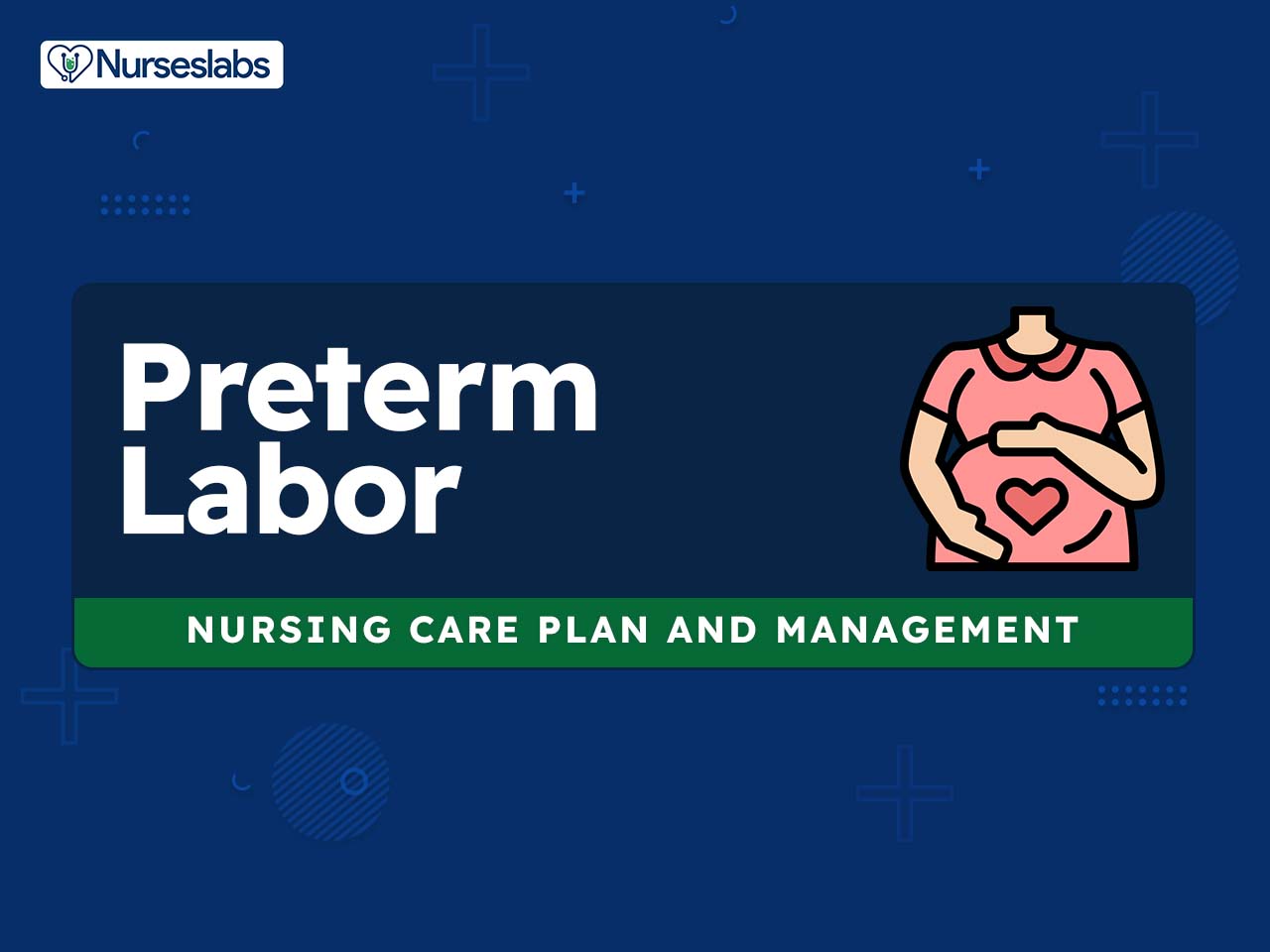
























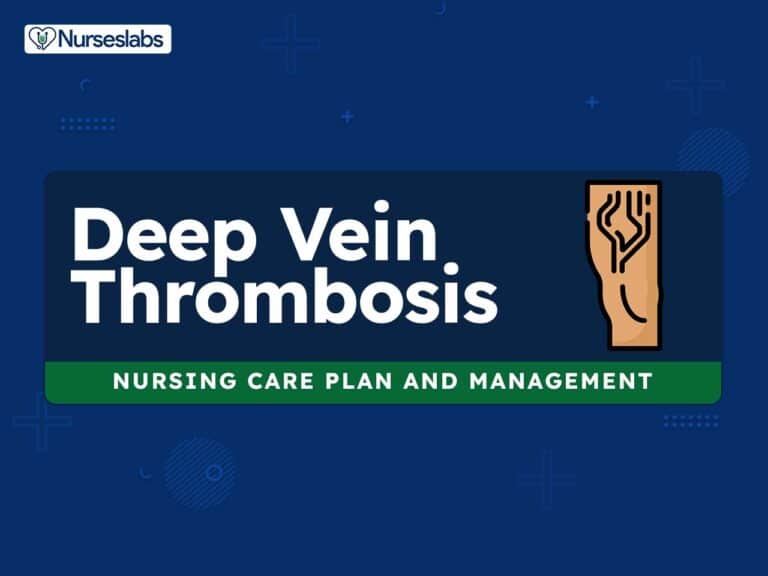


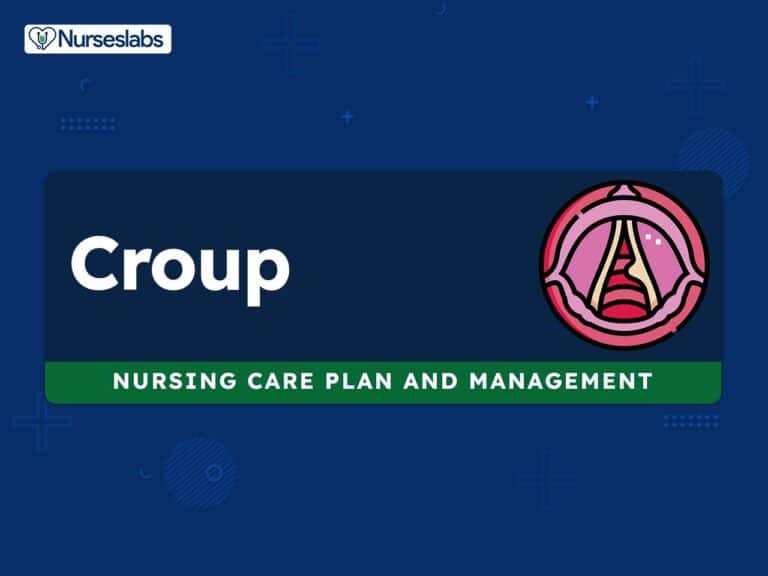

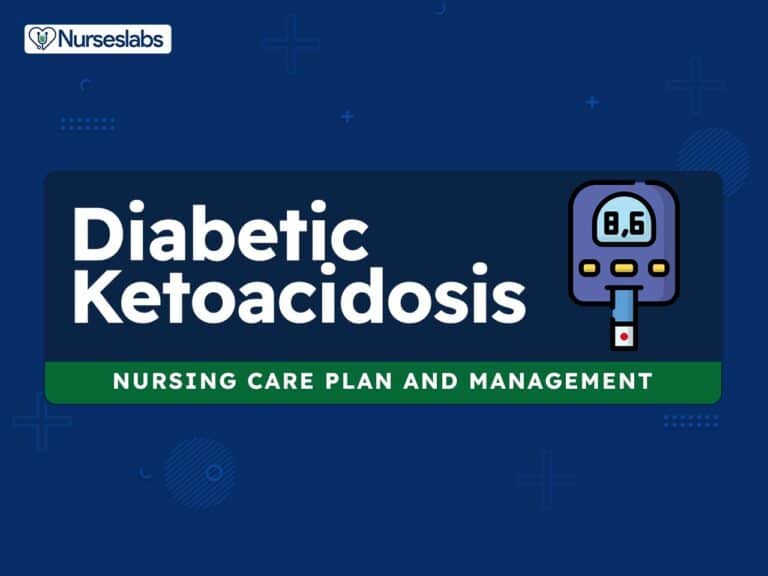



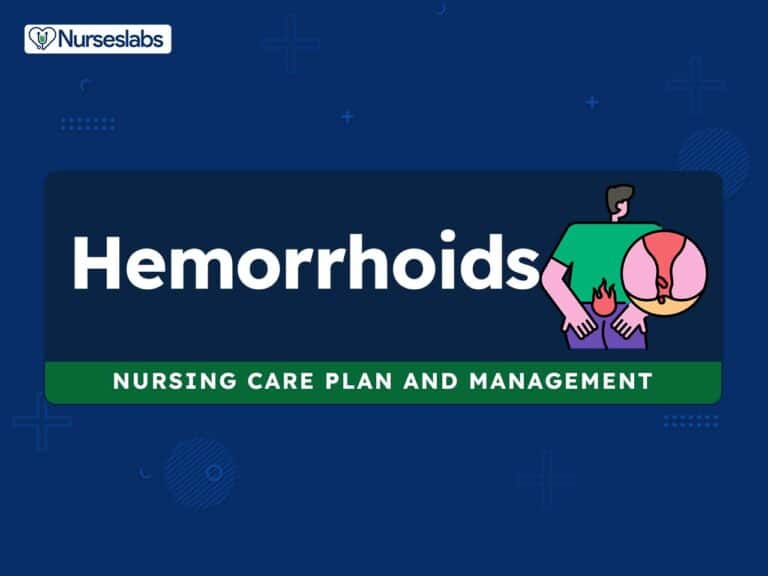
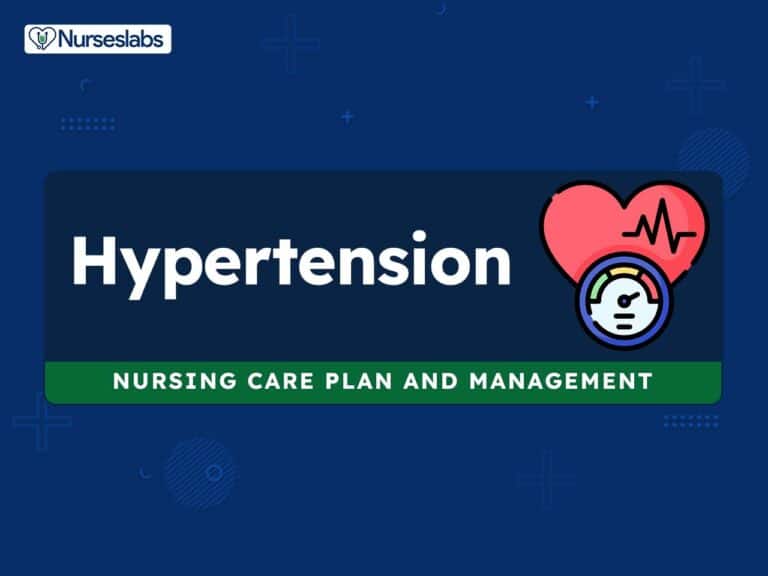
Leave a Comment